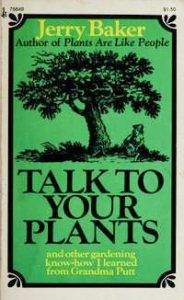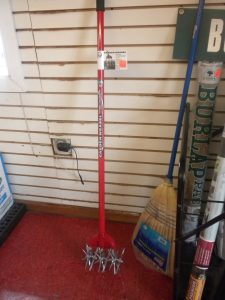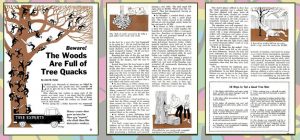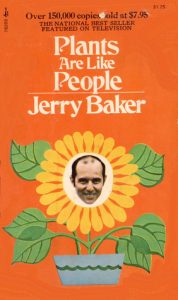In my educational seminars I’ve long shared a version of the CRAAP test (currency, relevance, authority, accuracy, and purpose) for analyzing information related to gardens and landscapes. My version is CRAP (credibility, relevance, accuracy, purpose), and we’ve published an Extension Manual that explains in detail how to apply it. This past week I was at the Philadelphia Flower Show participating in Bartlett’s Tree Care Update panel. Given that the theme of the show was “Flower Power,” I figured that a talk on Magical Mystery Cures was in order. And the 1960’s was the decade where the late Jerry Baker gained prominence as a garden authority – and whose presence is still widely felt nearly 60 years later.

Now, I could spend the rest of the year discussing all of Jerry’s advice, tips, and tonics for gardens – but it’s more useful to determine whether he is a credible source of reliable information. So let’s apply the CRAP test.
C = credibility. What are Jerry’s credentials as a garden expert? It’s easy to find this information from the internet, including the Jerry Baker website. He had no academic training in plant or soil sciences but started his career as an undercover cop who often posed as a landscaper. His books are all popular publications, meaning they have not gone through critical review by experts before publication.
R = relevance. For our purposes, his information is relevant to our focus of managing gardens and landscapes (as opposed to production agriculture, for instance).
A = accuracy. Jerry’s advice is not based on any scientific source. He relies on common-sense approaches, folklore, and his grandmother’s advice. In fact, many of his assertions are at odds with published scientific evidence. Now, science evolves, and older scientific publications are sometimes found to be inaccurate after new information comes to light. If Jerry’s books were meant to be accurate sources of information, they would be updated with new findings as subsequent editions were published. This is what happens with textbooks, for example.
P = purpose. What is Jerry’s ultimate purpose? It’s sales. There’s no way around this conclusion. Over twenty million copies of his books have been sold, and during his career he became the spokesperson for several gardening products. Probably the most well-known of these was the Garden Weasel (which parenthetically is a great way to destroy fine roots and soil structure). There’s no doubt he was a brilliant self-promoter and marketer. But he was not a reliable resource, and many of his “tips and tonics” are extraordinarily harmful to plants, pets, and the environment.

While I was wrapping up my research on Jerry Baker I was particularly taken by a chapter in one of his books (one of his Back to Nature Almanacs) called “The Tree Quacks.” I thought some of these quotes were particularly ironic:


Imagine my surprise when I discovered that these quotes were actually not his own. In fact, the entire chapter was plagiarized from a 1964 article by John Haller in Popular Science, which is online. This action is uncomfortably similar to his 1985 trademarking of the phrase “America’s Master Gardener,” 12 years after the Master Gardener program was formed (but not trademarked) at Washington State University.

I hope this post has helped you learn to analyze the credibility of information and information sources. If so, you can claim the of America’s Master CRAPper ™!

His advocacy of the weasel says it all. We have never heard of the man over here but much of what you have to say about garden pundits sounds familiar.
I am also sceptical to academical geniuses. Who invented crape myrtle murder? Raising the canopy? Beatle haircut? Florida pruning of palms? Overpruning? I hate pruning as an art I prefer the science of pruning.I think a garden should be for relaxing and not going around overpruning all the time. You get older and you want to relax more. Maybe I could get 20% more flowers if I did this or that but maybee it is ok for me. I might give plants enough room from the start so I get rid of unecessary pruning. I might like to watch a garden in wintertime and I want everything to be beutiful an not seeing ugly badly pruned plants. If it looks like shit in wintertime it is bad pruning whatever the experts say. Give the plants room enough, the right soil, light/ shadow as they want, and the garden is better when it is not flat so water can run off and other plants can get plenty of water. Pruning advice is allways changing and pruning art is terrible like bonzai, topiary and cloud trees. It wasn’t professors that started Plant Amnesty.
Not sure why you are insulting academics. They are the ones that are advancing the science – and I’m not sure any of the things you mention are based in any published science. Urban horticulture and arboriculture are young sciences, so of course they are constantly changing. Sometimes it’s just tweaking the edges, sometimes it’s a major shift. But without someone doing legitimate, published research, you’ve got nothing except anecdotes. (And BTW I knew Cass Turnbull well. We published a book chapter together on pruning and my work is respected by PA.)